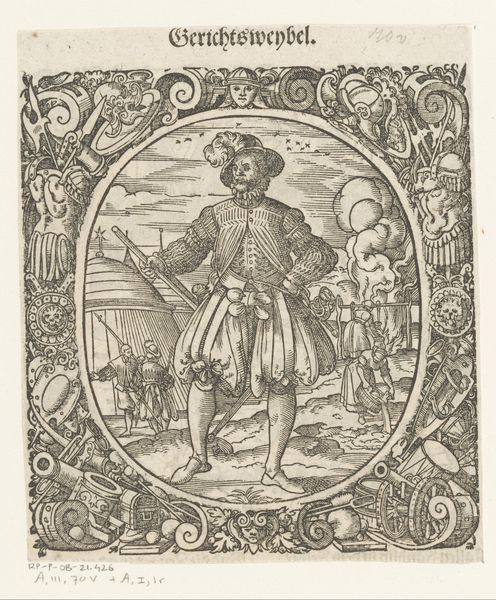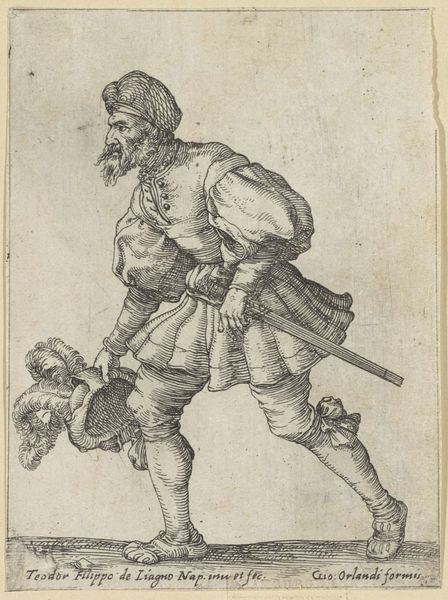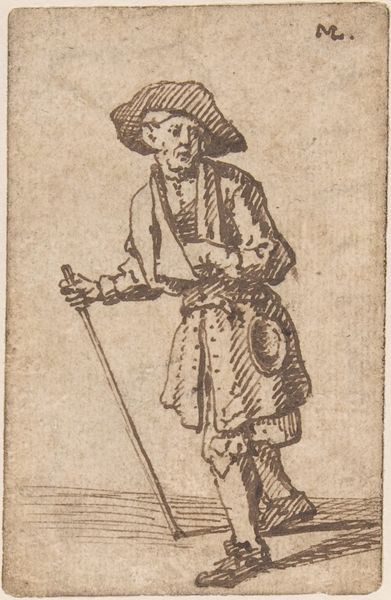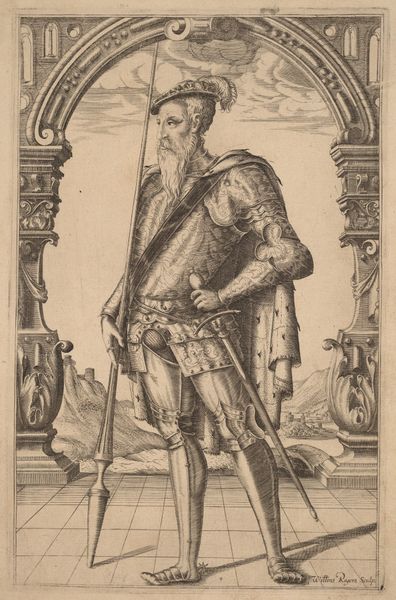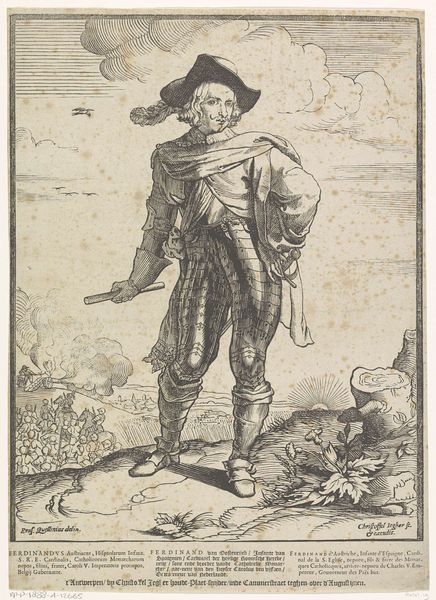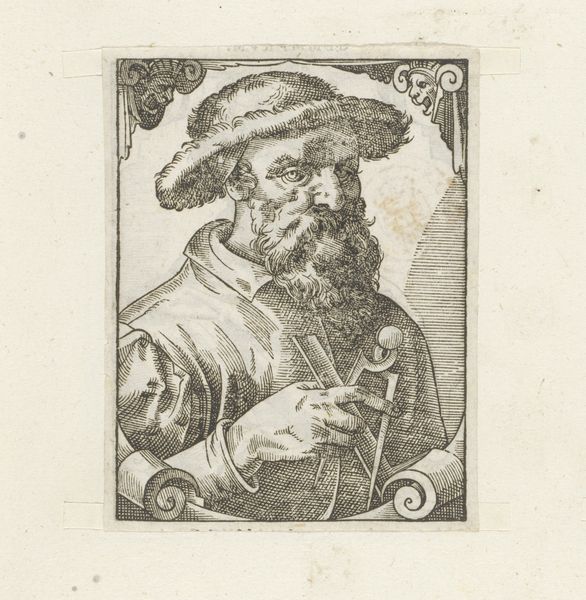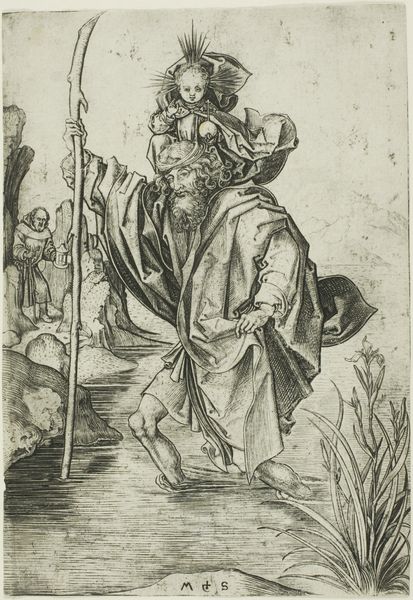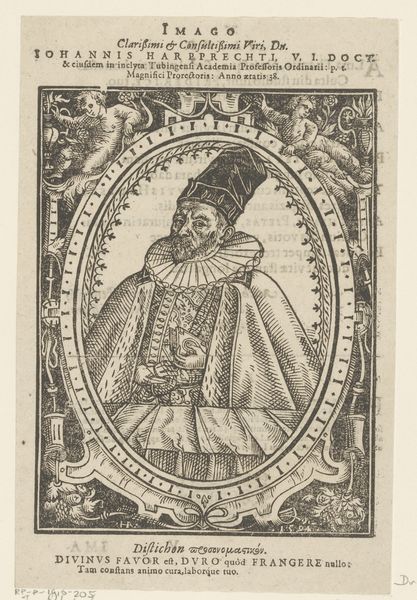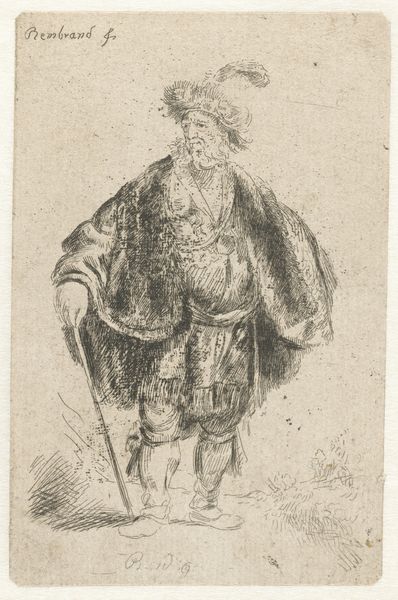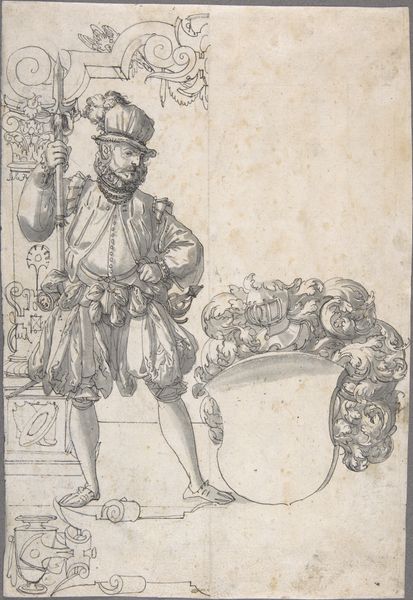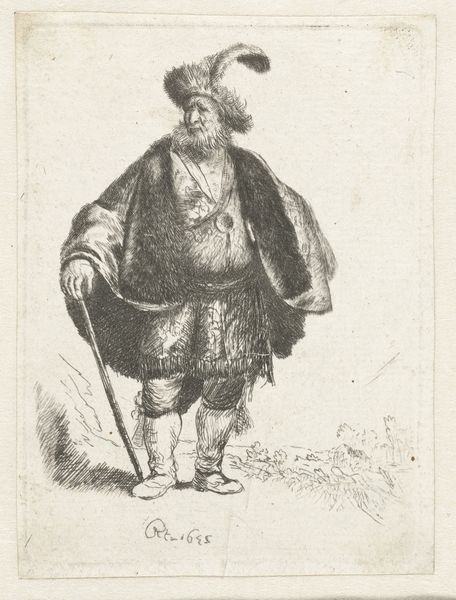
print, etching, engraving
#
portrait
#
baroque
# print
#
pen sketch
#
etching
#
pencil sketch
#
figuration
#
genre-painting
#
engraving
Dimensions: height 91 mm, width 49 mm
Copyright: Rijks Museum: Open Domain
Editor: This print, titled "The Quacksalver," dates back to sometime between 1719 and 1780. It's attributed to an anonymous artist. Made using etching and engraving, it's quite detailed for its size, and the floral border gives it a playful feel despite the rather serious expression of the man at its center. What strikes you most about this piece? Curator: Considering this work, I see a sharp commentary on social structures of the time. Quacksalvers were itinerant figures, preying on the vulnerable with false promises of cures. The print, displayed in a public setting, would function as a warning, potentially influencing the way people perceived these figures, yes? Is this figure being mocked or demonized? How does the choice of portraying the quacksalver within a decorative floral frame impact our interpretation? Editor: That's interesting. I hadn’t considered the location where this print might have been displayed, but I guess that shapes the message it sends. Does the relative lack of detail in the crowd say something about the lives of regular people and maybe society itself? Curator: Precisely. The relatively crude lines depicting the crowd perhaps underscores their vulnerability and gullibility in the face of the quacksalver's theatrics. Prints like this were often circulated widely, influencing public opinion and solidifying social norms. Were such critical artworks openly accepted and how would this influence social hierarchies? Editor: So, this isn't just a portrait of a quacksalver, but almost a commentary on social anxieties and power dynamics? It's much deeper than I initially thought. Curator: Exactly. Consider how the artwork actively shapes how these figures were understood, perpetuating a specific public role and view of political and social events, while reinforcing cultural assumptions. Editor: Thanks, understanding the original intent of art encourages reflection in new and diverse ways. Curator: My pleasure. Remembering this historical context of image consumption encourages a critical viewpoint of art, and its function within societal systems.
Comments
No comments
Be the first to comment and join the conversation on the ultimate creative platform.

